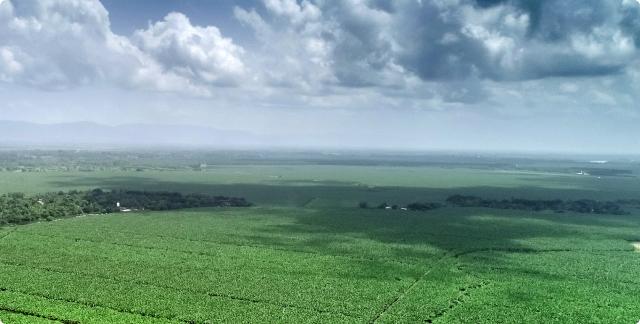

The flourishing of the banana industry dates back to the second half of the 19th century, when, with the invention of refrigeration, it became possible to transport this product to regions with a temperate climate. Its founders are considered to be two Americans – Lorenzo Baker and Minor Keith, who independently in 1870 and 1872 were engaged in the transportation of these fruits from Latin America to the USA – the first delivered goods from Jamaica to Boston, and the second founded a plantation in Costa Rica and transported products by sea to New Orleans and New York. The first shipments were risky – in the case of an unfavorable wind, the ships lingered on the way, and the goods quickly deteriorated.
However, by the beginning of the 20th century business began to develop rapidly and with the light hand of the American writer O. Henry (a series of stories “Kings and Cabbage”) even the term “banana republic” appeared, referring to economically weak states, completely dependent on the export of these fruits. The rapid growth of the industry continued in the 20th century – only from 1961 to 2001, the production of goods increased by more than 3.5 times.
Currently, bananas are grown in almost all countries with a humid tropical climate, mainly in developing countries. According to the Food and Agriculture Organization of the United Nations (FAO), which deals with agricultural development, the total amount of bananas grown in the world in 2001 is estimated to be about 99 million tons (the number is approximate as it takes into account the entire crop, including home gardens). Not all countries are engaged in the export of this product – for example, India, Brazil, China, Thailand grow it only for domestic consumption.
However, in terms of production, India and China, as well as the Philippines, occupy a leading position in the world – the share of India is about 25% and the shares of Brazil and Ecuador – 9% each (average figures for 2001-2005, FAO). About 80% of all exports go to Latin American countries – mainly Ecuador (28.5%), Costa Rica (13.9%), Colombia (10.0%) and Guatemala (5.8%). A large volume of exports also falls on the Philippines (11.7%) (average 2001-2004, FAO). In many island nations, bananas account for the lion’s share of export earnings – for example, in Saint Lucia, it accounts for almost half (49.6%). The main importers of products are the European Union (33.9%), the USA (28.3%) and Japan (7.1%) (average figures for 2001-2004, FAO).
Banana exports in 2019 amounted to 20 million tons worth $10-15 billion, which exceeds previously achieved indicators.
World production of bananas by years (thousand tons)
- 1965 26 395
- 1970 31 342
- 1975 31 350
- 1980 36 687
- 1985 39 736
- 1990 46 809
- 1995 56 610
- 2000 65 124
- 2005 78 873
- 2006 85 373
- 2007 89 822
- 2008 93 813
- 2009 97 378
- 2012 101 993
Top banana producing countries (thousand tons)
| Country | 1985 | 1995 | 2005 | 2012 | 2017 | 2020 |
|---|---|---|---|---|---|---|
| India | 5389 | 10182 | 18887 | 24869 | 30500 | 31504 |
| China | 829 | 3297 | 6666 | 10845 | 11200 | 11513 |
| Indonesia | 1908 | 3805 | 5177 | 6189 | 7162 | 8182 |
| Brazil | 5007 | 5801 | 6703 | 6902 | 6700 | 6637 |
| Ecuador | 1969 | 5403 | 6118 | 7012 | 6300 | 6023 |
| Philippines | 3704 | 4236 | 6298 | 9225 | 6100 | 6955 |
| Guatemala | 484 | 780 | 1231 | 2700 | 3900 | 4476 |
| Angola | 960 | 2991 | 3916 | 4115 | ||
| Tanzania | 155 | 130 | 2007 | 2524 | 3500 | 3419 |
| Costa Rica | 1007 | 2122 | 1875 | 2136 | 2600 | 2529 |
| Mexico | 1995 | 2032 | 2250 | 2204 | 2200 | 2464 |
| Colombia | 1200 | 1631 | 1798 | 1982 | 3800 | 2435 |
| Peru | 2082 | 1981 | 2314 | |||
| Vietnam | 1080 | 1282 | 1344 | 1560 | 2100 | 2191 |
| Kenya | 1255 | 1207 | 1434 | 1856 | ||
| Egypt | 203 | 498 | 880 | 1129 | 1365 | 1382 |
| Thailand | 1580 | 1750 | 2000 | 1650 | 1114 | 1360 |
| Burundi | 1624 | 1184 | 831 | 1280 | ||
| Papua New Guinea | 470 | 710 | 900 | 1180 | 1271 | 1261 |
| Dominican Republic | 543 | 968 | 1145 | 1232 | ||
| Cameroon | 929 | 1471 | 1246 | 1209 | ||
| Rwanda | 2593 | 2550 | 1739 | 1118 | ||
| Sudan | 589 | 750 | 928 | 924 | ||
| Ethiopia | 211 | 302 | 493 | 898 | ||
| Venezuela | 529 | 424 | 551 | 884 | ||
| Congo | 313 | 364 | 814 | 822 | ||
| Bangladesh | 898 | 745 | 807 | 818 | ||
| Mozambique | 142 | 470 | 643 | 775 | ||
| Turkey | 150 | 207 | 369 | 728 | ||
| Laos | 148 | 365 | 946 | 706 |